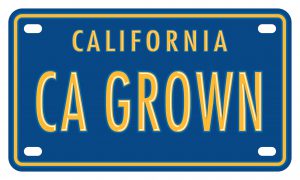-
Recent Posts
- Secretary Ross sees sustainable food processing in action in Sonoma County
- CDFA Animal Blood Bank Program Inspires Guidelines Abroad
- One in nine jobs; new report reveals massive economic footprint of Fresno County farms — from the Business Journal
- Trade mission to Mexico concludes — important opportunities to connect on trade issues as well as New World Screwworm
- CDFA joins USDA trade mission to Mexico
Recent Comments
- Micah on Secretary Ross on Water, Workforce, and the Future of California Agriculture — from AgNet West
- CA agriculture value surpasses $60B | Western Livestock Journal on Value of California Ag production tops $60 billion for first time
- Kathy de Contreras on CDFA IT department honored at “Best of California” awards
- El costo económico de las deportaciones masivas ya es visible en California - Espanol News on Nine California Counties Make Top-10 List for Ag Sales in the U.S.
- Deportations are taking a toll on California’s economy – and have only just begun – The News Beyond Detroit on Nine California Counties Make Top-10 List for Ag Sales in the U.S.
Archives
- November 2025
- October 2025
- September 2025
- August 2025
- July 2025
- June 2025
- May 2025
- April 2025
- March 2025
- February 2025
- January 2025
- December 2024
- November 2024
- October 2024
- September 2024
- August 2024
- July 2024
- June 2024
- May 2024
- April 2024
- March 2024
- February 2024
- January 2024
- December 2023
- November 2023
- October 2023
- September 2023
- August 2023
- July 2023
- June 2023
- May 2023
- April 2023
- March 2023
- February 2023
- January 2023
- December 2022
- November 2022
- October 2022
- September 2022
- August 2022
- July 2022
- June 2022
- May 2022
- April 2022
- March 2022
- February 2022
- January 2022
- December 2021
- November 2021
- October 2021
- September 2021
- August 2021
- July 2021
- June 2021
- May 2021
- April 2021
- March 2021
- February 2021
- January 2021
- December 2020
- November 2020
- October 2020
- September 2020
- August 2020
- July 2020
- June 2020
- May 2020
- April 2020
- March 2020
- February 2020
- January 2020
- December 2019
- November 2019
- October 2019
- September 2019
- August 2019
- July 2019
- June 2019
- May 2019
- April 2019
- March 2019
- February 2019
- January 2019
- December 2018
- November 2018
- October 2018
- September 2018
- August 2018
- July 2018
- June 2018
- May 2018
- April 2018
- March 2018
- February 2018
- January 2018
- December 2017
- November 2017
- October 2017
- September 2017
- August 2017
- July 2017
- June 2017
- May 2017
- April 2017
- March 2017
- February 2017
- January 2017
- December 2016
- November 2016
- October 2016
- September 2016
- August 2016
- July 2016
- June 2016
- May 2016
- April 2016
- March 2016
- February 2016
- January 2016
- December 2015
- November 2015
- October 2015
- September 2015
- August 2015
- July 2015
- June 2015
- May 2015
- April 2015
- March 2015
- February 2015
- January 2015
- December 2014
- November 2014
- October 2014
- September 2014
- August 2014
- July 2014
- June 2014
- May 2014
- April 2014
- March 2014
- February 2014
- January 2014
- December 2013
- November 2013
- October 2013
- September 2013
- August 2013
- July 2013
- June 2013
- May 2013
- April 2013
- March 2013
- February 2013
- January 2013
- December 2012
- November 2012
- October 2012
- September 2012
- August 2012
- July 2012
- June 2012
- May 2012
- April 2012
- March 2012
- February 2012
- January 2012
- December 2011
- November 2011
- October 2011
- September 2011
- August 2011
- July 2011
- June 2011
Categories
- AG Vision
- Agricultural Education
- Agricultural Marketing
- Alternative Fuels
- Animal health
- Animal Welfare
- Asian Citrus Psyllid
- Biodiversity
- Border stations
- BSE
- Cannabis
- Cannella Panel
- Climate Change
- Climate Smart Agriculture
- Community-based Food System
- Conservation
- Dairy
- Drought
- Environment
- Fairs
- Farm Bill
- Farm Labor
- Farmers' Markets
- Fertilizer
- Food Access
- Food Safety
- Food Waste
- Glassy-winged Sharpshooter
- Growing California
- Healthy soils
- HLB
- Hydrogen
- Integrated Pest Management (IPM)
- Invasive Species
- Light Brown Apple Moth
- Livestock ID
- Measurement Standards
- Nutrition
- Organic agriculture
- Pierce's Disease
- Pollinators
- Specialty Crops
- State Board of Food and Agriculture
- Succession Planning
- Trade
- Uncategorized
Pages

Rescuing animals during disasters – CDFA participates in video by Soundings Magazine
Posted in Uncategorized
Leave a comment
CDFA and UC Davis collaborate to assist commercial laboratories testing smoke impact in wine and winegrapes
The California Department of Food and Agriculture (CDFA), the UC Davis Department of Viticulture and Enology, and the UC Davis College of Agricultural and Environmental Sciences are offering laboratory services, with limited capacity, to test winegrapes and wine for the presence of smoke compounds due to recent wildfires. In addition to commercial laboratories already performing tests, these laboratories are offering limited services to hopefully reduce testing turnaround times.
“We are hearing many growers and grower representatives voice concern over lab turnaround time, as lab results are needed to make a decision about harvesting their winegrapes or to assess the resulting wines,” said CDFA Secretary Karen Ross. “To answer a need in our world-renown California wine industry, CDFA is proud to partner with UC Davis to offer the resources of our laboratories.”
“The wine and grape industries of California are important to the state and to our college, “ said Helene Dillard, Dean of the College of Agricultural and Environmental Sciences at UC Davis. “The wildfires this year have been particularly devastating, so we are very happy to be partnering with the CDFA to apply our collective resources to this important issue.”
“Our staff members are working diligently to meet the laboratory needs of the wine and winegrape industries resulting from the unprecedented number of wildfires on the west coast,” said Gordon Burns, CEO of ETS Laboratories. “We appreciate the partnership of CDFA and UC Davis as we work together to answer industry needs.”
CDFA’s Center for Analytical Chemistry (CAC) is offering grape analysis. CDFA’s limited testing capacity is estimated to be 30-50 samples per day, with a turnaround time of 3-5 days, as long as a backlog does not occur. If a backlog does occur and the turnaround time will be longer, CDFA will provide that information on its website.
The UC Davis laboratories are teaming-up to provide wine analysis.
While the analytical methods of the CDFA and UC Davis labs have been validated and are accurate, the methods are not ISO 17025 (International Organization for Standardization) accredited. Therefore, growers should verify with insurance providers and/or legal counsel that the results will be acceptable before submitting samples. The laboratories will measure seven smoke-related compounds (guaiacol, 4-methylguaiacol, o-cresol, p-cresol, m-cresol, syringol, and 4-methylsyringol).
To submit grape samples, visit the CDFA laboratory website for sample submission instructions, or contact CDFA at CDFA.CAC_receiving@cdfa.ca.gov or (916) 228-6844. Price per grape sample is $246.
To submit wine samples, visit the UC Davis laboratory website for more information. Price per wine sample is $150.
Posted in Uncategorized
Leave a comment
Today is the first-ever International Day of Awareness of Food Loss and Waste — learn how you can make a difference
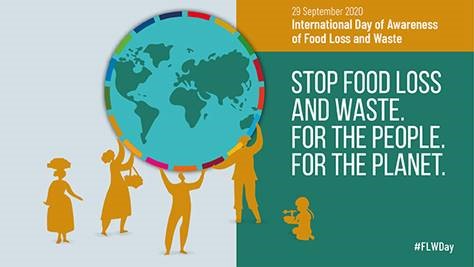
Today is the Food and Agriculture Organization (FAO) of the United Nations’ first-ever International Day of Awareness of Food Loss and Waste.
“Reducing food losses and waste is essential in a world where the number of people affected by hunger has been slowly on the rise since 2014, and tons and tons of edible food are lost and/or wasted every day,” the FAO announced. “Food loss and waste also puts unnecessary pressure on the natural resource base and on the environment, depleting the natural resource base and generating greenhouse gases.”
The U.S. Environmental Protection Agency (U.S. EPA) Food Recovery Hierarchy also prioritizes actions organizations and individuals can take to prevent and divert wasted food.
Visit FAO’s International Day of Awareness of Food Loss and Waste website to “read more and discover what you can do. Take action, start something. Stop food loss and waste. For the people. For the planet.”
The California Department of Food and Agriculture’s (CDFA) commitment to reducing food loss and waste includes efforts by the Office of Farm to Fork to lessen the impact of food insecurity through increasing access points and expanding availability of resources; the CDFA Commercial Feed Program promoting the recovery of food inedible to humans by the California livestock feed industry to create high-quality animal feed products; the CDFA Rendering Program promoting the process of breaking down animal by-products into fats and proteins that are used in the manufacturing of many products, from animal feed to cosmetics; and the CDFA Office of Environmental Farming and Innovation‘s work with compost through the Alternative Manure Management Program and the Healthy Soils Program.
Posted in Uncategorized
Leave a comment
New wildfires bring more evacuated animals to fairgrounds
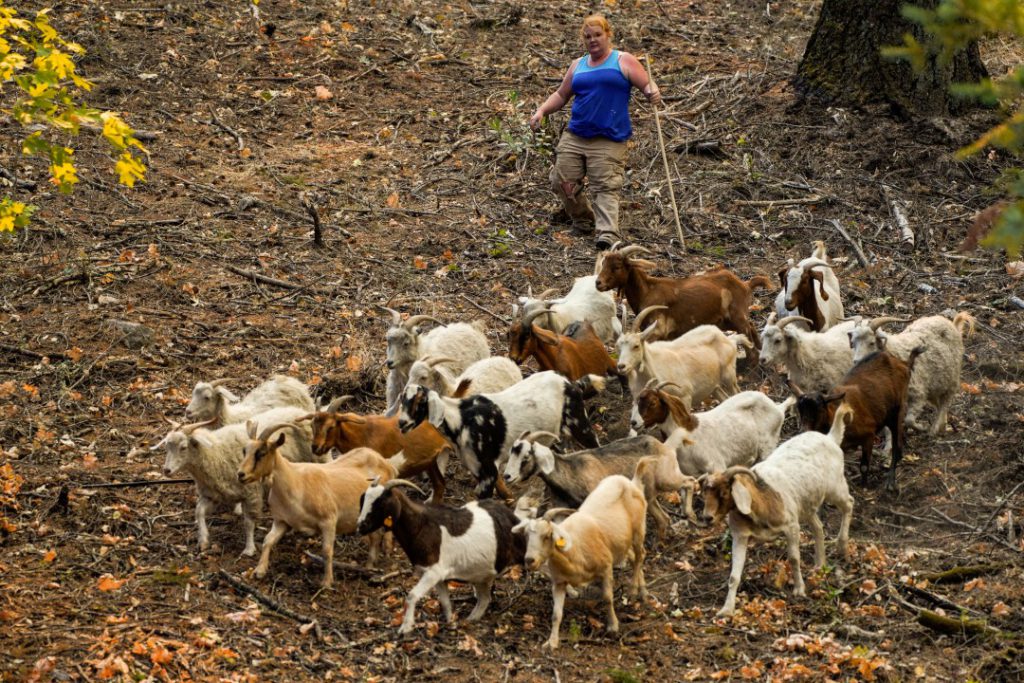
A new series of wildfires erupting in Northern California in recent days has resulted in additional fairgrounds opening as animal shelters, evacuation centers, and fire camps.
Fairgrounds in Petaluma (Sonoma-Marin Fairgrounds) and Gridley (Butte County Fairgrounds) are newly available to house animals evacuated out of the path of the Glass and North Complex fires – chickens, goats, pigs, donkeys, horses, llamas, rabbits, sheep. ducks, quail and turkeys, so far. Additional animals are anticipated.
To facilitate evacuations, CDFA utilizes CARES, the California Animal Response Emergency System. Partners in this program are the Governor’s Office of Emergency Services, local animal control agencies, and volunteer organizations on the ground providing urgent assistance to animals and the people who care for them. CDFA personnel act as coordinators for evacuation activities and are currently engaged in Butte County.
A total of 17 fairgrounds are now serving as community resource centers during wildfires throughout California, and they are presently housing more than 365 animals between them, also including a bull, dogs, cats and koi.
Posted in Uncategorized
Leave a comment
Are fruits and veggies from the garden safe to eat if they’re exposed to wildfire smoke? From the Redding Record-Searchlight
By Leimone Waite, Master Gardener
Q. How does smoke from wildfires affect my garden, and are my fruits and vegetables safe to eat after pollution levels reached “very unhealthy” levels over the last week?
A: In the past few years we have been asked this question several times when the air quality has become hazardous and ash accumulates on our vegetable gardens. The short answer is no, there is no significant risk to eating produce from the garden that has been exposed to smoke. Ash can be a little more problematic, but produce is safe to eat if ash is washed off leaves and fruit.
This same question was asked of the Sonoma County Master Gardeners after the devastating fires around Santa Rosa in 2017. They put together a citizen science group to study the effects of smoke and ash on produce and soil after the fires. After the fires, there was concern from the Food and Drug Administration, the California Department of Food and Agriculture and the California Department of Public Health that firefighting chemicals, and chemicals from combustion products such as polycyclic aromatic hydrocarbons (PAHs) and dioxins and other toxic chemicals might contaminate local produce.
During those fires, local gardens and small farm produce were providing significant food security to the region as it was difficult to get supplies in. Concern were that people working in gardens or on small farms might breathe in the toxic chemicals from ash or inhaled smoke, and that plants could potentially absorb the air pollutants directly through their leaves.
There has been research done on the risk of breathing in air pollutants from wildfire smoke, but little research on the risk to human health from ingesting contaminants from smoke and ash on produce.
To answer the question of produce safety after an urban wildfire, the Sonoma County Master Gardeners worked together to take samples from over 25 sites across the county. They used sampling protocol created under advisement by Environmental Health and Food Safety specialists. From each site they took triplicate samples that included washed and unwashed produce to determine if contaminants were present and if the contaminants could be easily washed off the leaves or fruit. Most produce sampled were leafy greens such as kale, lettuce and chard because they have a large surface area directly exposed to air pollution. In total, over 200 samples were taken and frozen for subsequent laboratory analysis.
The study found no detectable levels of toxins, PAHs or dioxins in the produce and stated that there was a “low concern” to eating vegetables and fruits after exposure to ash and smoke. In fact the study went on to state that the benefits of eating leafy greens outweigh any risk.
Posted in Uncategorized
1 Comment
In an era of distrust, ‘purpose’ resonates – opinion piece from Agri-Pulse
By Kerry Tucker and Teresa Siles
By now, most companies have heard about “purpose” – a buzzword making its way around corporate boardrooms and even the farm gate. Heck, even the Business Roundtable – an association founded on principles of serving shareholders – has adopted a purpose statement.
“Purpose” is about defining the end benefit of a company’s product or service to people or society as a whole – and there is no industry better suited to define itself by a strong purpose than agriculture. This is especially true today, as early on in the COVID-19 pandemic, eyes were opened to the fragility of the food system. Empty shelves, perceived food shortages and COVID-19 outbreaks in operations in the agrifood chain led some consumers to see the system as broken.
The pandemic struck following years of growing consumer interest, especially among younger segments, to know what companies, brands and industries are doing to make the world a better place. In fact, 47 percent of consumers disappointed with a brand’s stance on a social issue will stop buying its products – and 17 percent will never return, according to McKinsey & Company. What’s more, purpose-driven organizations have shown they can go a long way in earning, maintaining and, in some cases, winning back the trust of people an organization touches daily — from multi-generational employees to customers, consumers, investors and other stakeholders. And while some benefits are intangible, others are written in black and white in the form of solid financial returns.
Research by author and professor Raj Sisodia suggests that purpose-led companies significantly outperformed the S&P 500 between 1995 and 2011. In addition, McKinsey states that more than 2,000 academic studies have examined the impact of environmental, social and governance propositions on equity returns, and 63% of them found positive results.
The California State Board of Food and Agriculture, California Cattlemen’s Association and the National Association of State Departments of Agriculture are just a few of the organizations in agriculture that have recognized the value of purpose and clearly defined it for their organizations. Making California a better place to live because of what we grow and how we grow it is the defined purpose for the state board in California. Nourishing people, caring for livestock and sustaining the environment is the purpose and foundation upon which the California Cattlemen’s Association built a strategic plan last year, and the National Association of State Departments of Agriculture recently adopted a purpose to nourish people and communities while serving as stewards of the environment and public trust.
And while these words may inspire, the next generation purpose-driven company is about more than words on paper. It’s about aligning an organization to fulfill its purpose on multiple fronts. Those in positions of leadership should ask themselves:
- How are we committed to the betterment of society?
- What do our stakeholders care about and expect from us?
- Where and how can we make a difference and live our purpose?
- Will our board, management teams, employees and stakeholders want to follow us or will they think we’ve lost our way?
- How can we organize to keep purpose top of mind for our internal team?
- How can we measure and track our progress?
Once a purpose has been defined, been put through a stress test to vet for credibility, and ensure the organization is set up to authentically live and measure progress against its purpose, it can be valuable to share with external stakeholders in a compelling way. Some of the most successful demonstrations of purpose lie not only with one organization but rather by multiple companies, industry groups and stakeholders working together to bring about substantive change bigger than any one entity can do on its own. This is the type of change that truly matters.
In the current environment, where distrust is rampant and pessimism is high, agriculture’s ability to positively shape the future for multiple generations could be the bright light many are seeking.
Kerry Tucker is the founder of Food Foresight, a trends intelligence collaboration between Nuffer, Smith, Tucker and the California Institute of Agricultural Research at University of California, Davis. Teresa Siles is co-author of Food Foresight and President and Partner at Nuffer, Smith, Tucker Inc., a strategic planning and public relations firm headquartered in San Diego.
Posted in Uncategorized
Leave a comment
Climate Action Day Tomorrow: Secretary Ross to appear on panel on COVID-19 and climate change
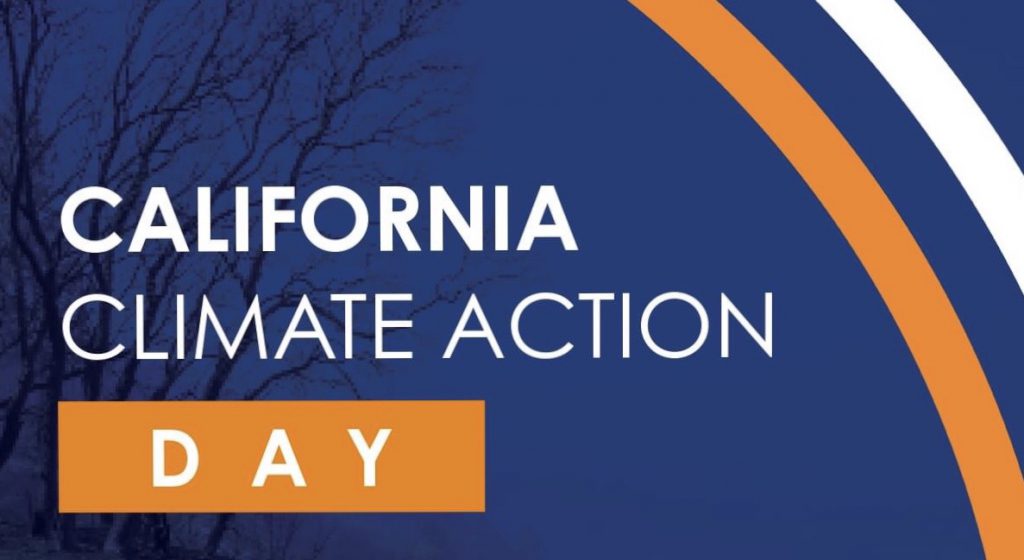
With Climate Week 2020 events underway this week, Governor Gavin Newsom will host a virtual California Climate Action Day on Thursday, September 24, convening world, state, tribal and local leaders, business executives and other experts to discuss innovative solutions to a wide array of climate challenges facing the state.
The series of virtual conversations will cover topics including building the state’s climate resilience, implementing climate policies in an equitable way, aligning financial decision-making with climate realities, and delivering climate, health and equity benefits for all our communities in the state’s recovery from the COVID-19 pandemic. The day of action will kick off at 9:00 a.m. PDT with an in-depth discussion between the Governor and Van Jones on the state’s groundbreaking climate agenda.
The discussions will be streamed on the Governor’s YouTube page here and can also be viewed by registrants here.
CDFA secretary Karen Ross will appear at 12:45 pm for a panel discussion on COVID-19 and climate change.
COVID and Climate Change: What’s Next?
The COVID-19 pandemic has severely impacted communities and institutions across California. The public health and economic crises are a stark reminder of another crisis already impacting Californians: climate change. Last year, the American Lung Association declared climate change a public health emergency. This panel will explore how the state might rebuild and refashion our communities, institutions and infrastructure going forward to build a greener, healthier, more prosperous and equitable California. It will highlight efforts underway to recover from this pandemic in a way that creates jobs while delivering climate, health and equity benefits for all Californians.
PANELISTS:
Angela Glover Blackwell
Founder in Residence, PolicyLink
Lisa Jackson
VP of Environment, Policy and Social Initiatives, Apple
Michael Tubbs
Mayor, City of Stockton
Karen Ross
Secretary, California Department of Food & Agriculture
Josh Fryday
Chief Service Officer, California Volunteers
MODERATOR:
Jared Blumenfeld
Secretary, California Environmental Protection Agency
The rest of the agenda is as follows:
9:00 AM
Conversation with Governor Gavin Newsom & Van Jones
In this year alone, California and much of the West Coast have endured record-setting heat and wildfires. In this conversation between Governor Newsom and award-winning journalist Van Jones, we will hear how California can deliver on our aggressive climate change agenda and continue to be the standard-bearer for change.
9:45 AM
Charting an Equitable Path to Carbon Neutrality
California is recognized globally for its environmental leadership. Notably, we have grown our economy while reducing greenhouse gas emissions and are aggressively pursuing a 100 percent clean energy future and carbon neutrality by 2045. Under Governor Newsom, the state is making equity a key pillar of how we achieve those goals. This panel will explore how the state is making progress – highlighting important initiatives underway on our energy, transportation and building sectors – and address what challenges and opportunities lie ahead, and how to implement policy in an equitable way. The panel will also highlight carbon neutrality commitments in business and State government and will focus on equitable principles of our carbon neutral future.
PANELISTS:
Eduardo Garcia
CA Assemblymember, 56th Assembly District
David Hochschild
Chair, California Energy Commission
Miya Yoshitani
Executive Director, Asian Pacific Environmental Network
MODERATOR:
Mary D. Nichols
Chair, California Air Resources Board
10:45 AM
From Wildfire to Water – Investing in Nature Based Solutions to Build Climate Resilience
Like so many of our global partners, California is bearing witness to the devastating impacts of climate change.
In recent weeks, wildfires of historic size, scale, and scope have swept across our state. Lives have been lost; homes and businesses have been destroyed; and nature we treasure is gone. These fires have taken place in the middle of a deadly pandemic and heatwave, and on the heels of a prolonged drought.
As California accelerates action to build climate resilience, we are committed to joining the global call for greater attention to the benefits of nature based solutions in addressing climate change and protecting biodiversity.
This panel will showcase nature based solutions being implemented by climate leaders across the globe, and explore how they contribute to increased equity, improved public health, and expanded economic opportunity.
PANELISTS:
Henk Ovink
Special Envoy for International Water Affairs, Kingdom of the Netherlands
Margo Robbins
Co-Founder and Executive Director, Cultural Fire Management Council; Member of Yurok Tribe
Karen Shippey
Chief Director, Environmental Sustainability, Government of Western Cape, South Africa
Senator Henry Stern
California State Senate, 27th District
MODERATOR:
Wade Crowfoot
Secretary, California Natural Resources Agency
11:45 AM
Driving Adoption of Climate-Related Financial Risk Disclosure in the U.S.
Without a clear and transparent accounting of how public and private investments address climate risk and opportunity, the economy will never truly price these factors into decision making. In California, the catastrophic wildfires of 2017, 2018, and 2019 have put in sharp focus the social, economic, and personal loss that come from the current approach to allocating the costs of risk. But increased disclosure can lead to real market change, at meaningful scale.
This panel will explore how, in the absence of federally mandated risk disclosure, state and sub-national governments can promote coordinated adoption of climate-related financial risk disclosure. Panelists will share insights on what represents effective climate-related financial risk disclosure, explore the pathways for disclosure available to sub-nationals and identify clear actions to align public and private action on Financial Risk Disclosure.
PANELISTS:
Bob Litterman
Chair, Climate-Related Market Risk Subcommittee of CFTC;
Founding Partner, Kepos Capital
Craig Davies
Head of Climate Resilience Investments, European Bank for Reconstruction and Development
James Manyika
Chairman and Director, McKinsey and Company
Divya Mankikar
Investment Manager, CalPERS
MODERATOR:
Kate Gordon
Director, Governor’s Office of Planning and Research & Senior Policy Advisor to the Governor on Climate
Posted in Uncategorized
Leave a comment
USDA announces additional assistance to farmers and ranchers impacted by Coronavirus
From a USDA news release
The USDA announced up to an additional $14 billion dollars for agricultural producers who continue to face market disruptions and associated costs because of COVID-19. Signup for the Coronavirus Food Assistance Program (CFAP 2) is underway and will continue through December 11, 2020.
The USDA will use funds being made available from the Commodity Credit Corporation (CCC) Charter Act and CARES Act to support row crops, livestock, specialty crops, dairy, aquaculture and many additional commodities. USDA has incorporated improvements in CFAP 2 based from stakeholder engagement and public feedback to better meet the needs of impacted farmers and ranchers.
Producers can apply for CFAP 2 at USDA’s Farm Service Agency (FSA) county offices. This program provides financial assistance that gives producers the ability to absorb increased marketing costs associated with the COVID-19 pandemic. Producers will be compensated for ongoing market disruptions and assisted with the associated marketing costs.
CFAP 2 payments will be made for three categories of commodities – Price Trigger Commodities, Flat-rate Crops and Sales Commodities.
Price Trigger Commodities
Price trigger commodities are major commodities that meet a minimum 5-percent price decline over a specified period of time. Eligible price trigger crops include barley, corn, sorghum, soybeans, sunflowers, upland cotton, and all classes of wheat. Payments will be based on 2020 planted acres of the crop, excluding prevented planting and experimental acres. Payments for price trigger crops will be the greater of: 1) the eligible acres multiplied by a payment rate of $15 per acre; or 2) the eligible acres multiplied by a nationwide crop marketing percentage, multiplied by a crop-specific payment rate, and then by the producer’s weighted 2020 Actual Production History (APH) approved yield. If the APH is not available, 85 percent of the 2019 Agriculture Risk Coverage-County Option (ARC-CO) benchmark yield for that crop will be used.
For broilers and eggs, payments will be based on 75 percent of the producers’ 2019 production.
Dairy (cow’s milk) payments will be based on actual milk production from April 1 to Aug. 31, 2020. The milk production for Sept. 1, 2020, to Dec. 31, 2020, will be estimated by FSA.
Eligible beef cattle, hogs and pigs, and lambs and sheep payments will be based on the maximum owned inventory of eligible livestock, excluding breeding stock, on a date selected by the producer, between Apr. 16, 2020, and Aug. 31, 2020.
Flat-rate Crops
Crops that either do not meet the 5-percent price decline trigger or do not have data available to calculate a price change will have payments calculated based on eligible 2020 acres multiplied by $15 per acre. These crops include alfalfa, extra long staple (ELS) cotton, oats, peanuts, rice, hemp, millet, mustard, safflower, sesame, triticale, rapeseed, and several others.
Sales Commodities
Sales commodities include specialty crops; aquaculture; nursery crops and floriculture; other commodities not included in the price trigger and flat-rate categories, including tobacco; goat milk; mink (including pelts); mohair; wool; and other livestock (excluding breeding stock) not included under the price trigger category that were grown for food, fiber, fur, or feathers. Payment calculations will use a sales-based approach, where producers are paid based on five payment gradations associated with their 2019 sales.
Additional commodities are eligible in CFAP 2 that weren’t eligible in the first iteration of the program. If your agricultural operation has been impacted by the pandemic since April 2020, we encourage you to apply for CFAP 2. A complete list of eligible commodities, payment rates and calculations can be found on farmers.gov/cfap.
Eligibility
There is a payment limitation of $250,000 per person or entity for all commodities combined. Applicants who are corporations, limited liability companies, limited partnerships may qualify for additional payment limits when members actively provide personal labor or personal management for the farming operation. In addition, this special payment limitation provision has been expanded to include trusts and estates for both CFAP 1 and 2.
Producers will also have to certify they meet the Adjusted Gross Income limitation of $900,000 unless at least 75 percent or more of their income is derived from farming, ranching or forestry-related activities. Producers must also be in compliance with Highly Erodible Land and Wetland Conservation provisions.
Applying for Assistance
Producers may now apply for assistance. Applications will be accepted through Dec. 11, 2020.
Additional information and application forms can be found at farmers.gov/cfap. Documentation to support the producer’s application and certification may be requested. All other eligibility forms, such as those related to adjusted gross income and payment information, can be downloaded from farmers.gov/cfap/apply. For existing FSA customers, including those who participated in CFAP 1, many documents are likely already on file. Producers should check with FSA county office to see if any of the forms need to be updated.
Posted in Uncategorized
Leave a comment
Farmers and Farmworkers: Protecting Our Food Supply and Sustaining Our Industry in Times of Crisis
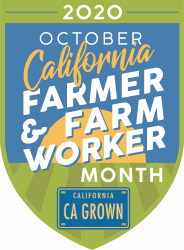
By CDFA secretary Karen Ross
CA GROWN has announced that the first-ever California Farmer and Farmworker Month will be recognized in October. It is a fitting tribute in a most challenging year.
When COVID-19 hit, farmers, farmworkers and the entire food and ag value chain moved swiftly and effectively to redirect supply lines from foodservice to retail and on-line platforms where possible. They increased contributions to food banks to avoid waste at a time we faced a substantial increase of need. They learned on the fly, securing personal protective equipment (PPE) and implementing operational and scheduling changes to keep workers safe. No segment of our society has handled the abrupt disruptions flawlessly, but through it all, agriculture has maintained an adaptive, creative, can-do approach.
The teamwork in response to this crisis includes California’s county agricultural commissioners. They have fulfilled an essential role is helping the state deliver PPE to farmworkers, and I offer my heartfelt thanks for their efforts. Through partnerships with ag and community based organizations, they have distributed 3.25 million N-95 masks for protection from wildfire smoke, in addition to COVID-19 PPE – 13.4 million surgical masks; 1.1 million cloth mask; 58,200 units of sanitizer; and 350,000 pairs of gloves.
I also want to mention the Housing for the Harvest Program, which was introduced by Governor Newsom in July and provides temporary hotel housing to farm and food processing workers who need to isolate due to COVID-19. The state will book the hotel rooms and has partnered with counties and local organizations to help administer wraparound services like transportation, meal delivery and wellness checks.
Housing for the Harvest is currently live in six counties (Kings, Fresno, Riverside, San Joaquin, Santa Barbara and Tulare), and we are hopeful that many more counties will join this crucial program in the weeks ahead.
California farms and ranches support 1.2 million jobs and generate $263 billion in total revenue for the state. We are an economic driver – but more than that, we are the source of a resilient urban food supply and a critical component of food security for our nation and beyond. The continued health of our industry is vital to this nation, and to customers across the globe. California’s essential agricultural workers plant, pick and pack a third of the vegetables and two-thirds of the fruits and nuts in America. and they care for the livestock that makes us the number one dairy producing state. That scale makes our state’s ag sector foundational in taking care of humanity’s most basic needs.
In a more ordinary year, I would spend time reflecting on the fact that the diverse bounty of our fields, orchards and pastures is the basis for our unique California food culture as well as our state’s character, beauty and allure. California is simply wall-to-wall with iconic landscapes, and many of those feature our farms, our rangelands, and our open spaces.
But this year, farming is less about iconic vistas and more about simple sustenance. It’s about growing food, protecting our food supply, and exceeding our annual average donation of 160 million pounds of nutritious food to California’s food banks. It’s about caring for one another.
This year, California’s agricultural community has come together like no time in recent memory. Through COVID-19, market uncertainties, heat waves, and wildfires we understand the importance of the work we do. We honor friends and neighbors who have been impacted, and we mourn the loss of loved ones and colleagues.
Despite the daunting crises that we face, safe and healthy food gives us much to be thankful for. These last six months have increased the curiosity of Californians about where and how their food is produced. It offers us a tremendous opportunity to connect with consumers and is the very reason why CA GROWN is proud to officially proclaim October as Farmer and Farmworker Month. As part of that recognition, the organization will donate one pound of food to the California Association of Food Bank’s Farm to Family Program each time the hashtag #buycagrown is used on social media platforms. I would like to express my appreciation to CA GROWN for its commitment in putting together this important opportunity to show our appreciation.
We have learned to do a lot by phone and computer from the confines of our homes these past six months. I am sure virtual events and business sessions will continue to have a large role in our professional and educational lives, even when COVID-19 is behind us. But you can’t telework planting seeds, milking cows, or harvesting crops. Technology has many important roles in our industry, but at the end of the day, it is our people – our farmers, our ranchers, and our workers – who ensure agriculture can feed us.
Posted in Uncategorized
Leave a comment
CA Grown kicks off “California Happy Hour at Home” campaign at Raley’s
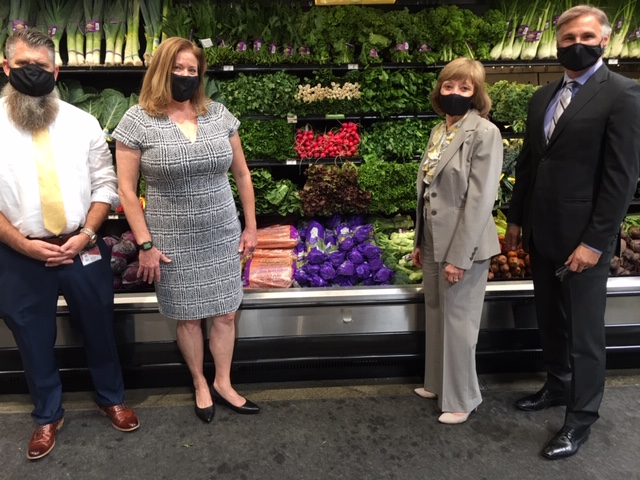
CDFA Secretary Karen Ross joined California Grown today for the unveiling of “California Happy Hour at Home,” an event at all Raley’s stores in California to promote California Grown products like wine, cheese, figs, grapes, pears and avocados. Pictured from left: Raley’s Director of Produce Michael Schutt, California Grown Executive Director Cherie Watte Angulo; CDFA Secretary Karen Ross; and Raley’s President and CEO Keith Knopf. #CAGROWN
